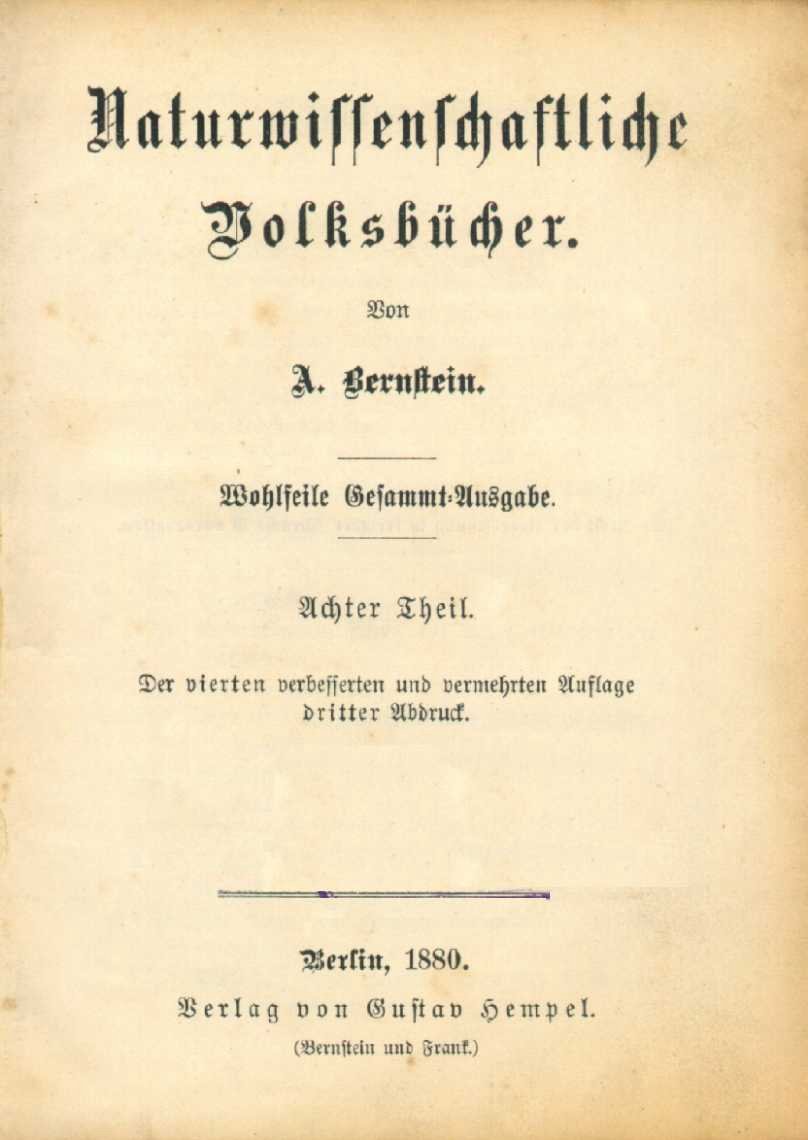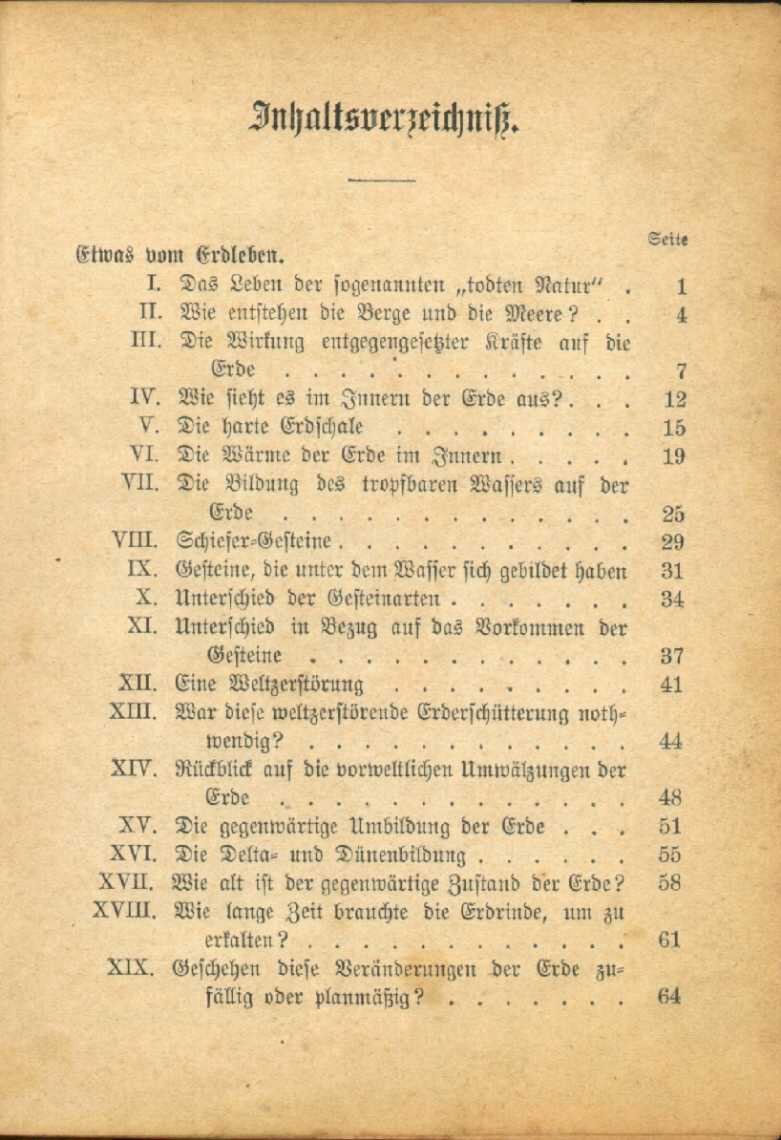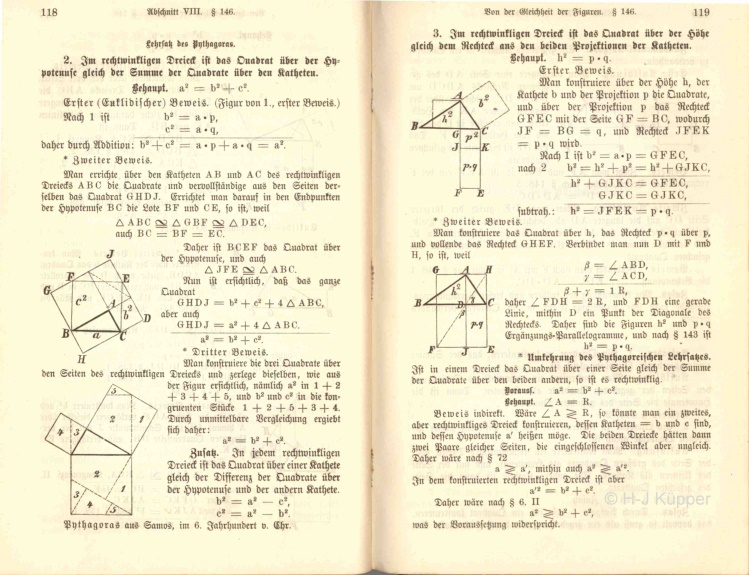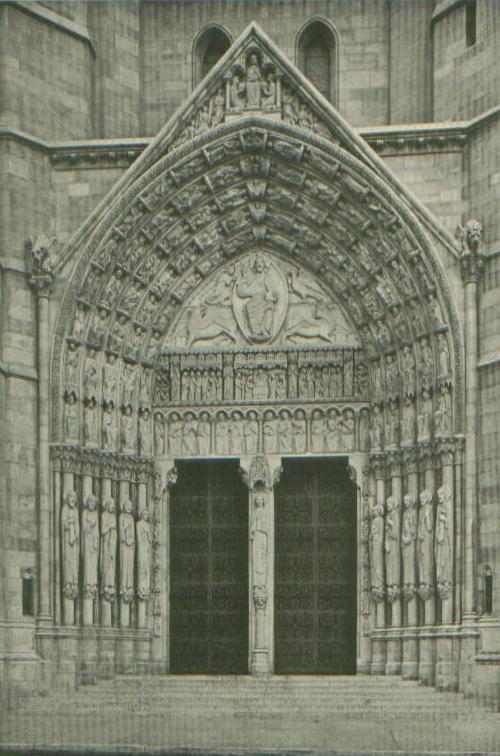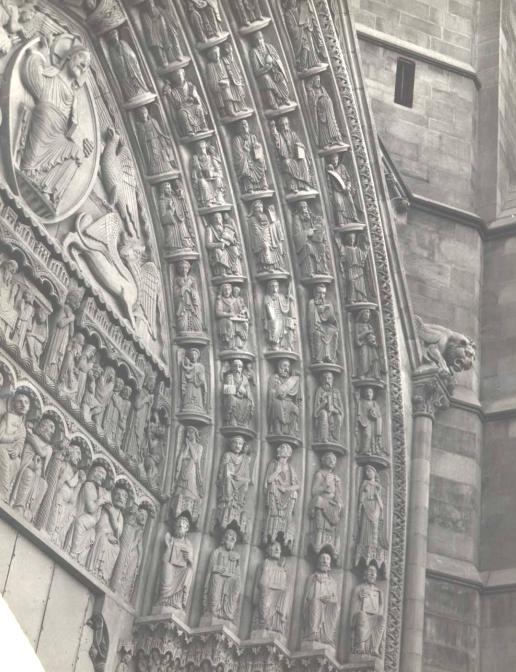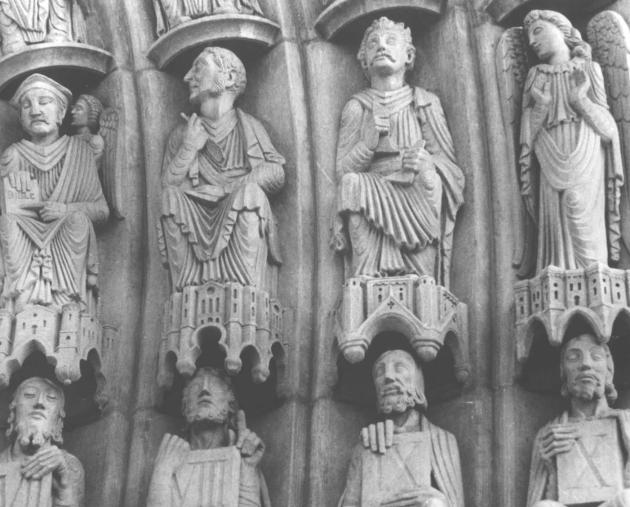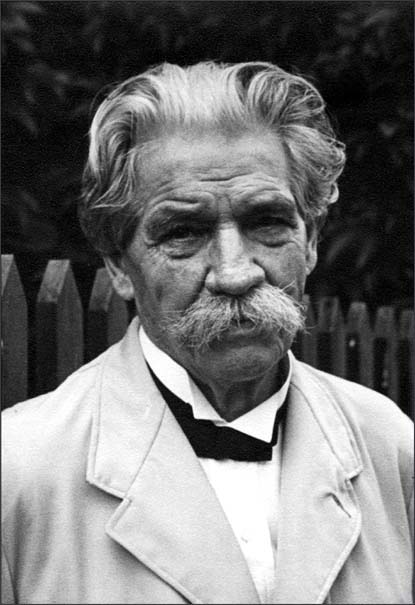“Wisdom is not a product of schooling but of the lifelong
attempt to acquire it.”
Albert Einstein, 1954
VARIOUS THINGS ABOUT ALBERT EINSTEIN
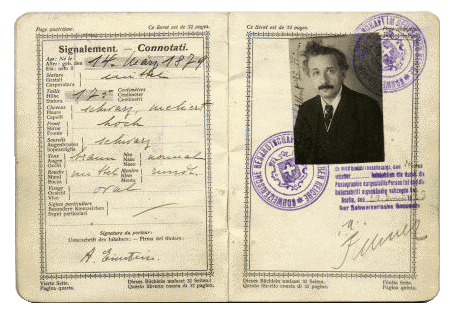
Photo: Historisches Museum Bern
Albert Einstein’s nationality
| Albert Einstein became a citizen of Württemberg (German national) through his birth on 14 March 1879 in Ulm (Württemberg; today Baden-Württemberg). Seventeen years later, on 28 January 1896, he was released from Württemberg citizenship at his own request and with his father’s permission. | ||
| Einstein stayed stateless for the next 5 years. | ||
| On February 21, 1901 he was given the naturalization of the city of Zurich and thus became a Swiss citizen. He remained a Swiss citizen until the end of his life. | ||
| Einstein’s chair for theoretical physics at the German University Prague from April 1, 1911 until September 30, 1912 was connected with obtaining the Austrian citizenship. | ||
| Einstein regained the German citizenship in April 1914 when he entered the German civil service, among other things as full member of the Prussian Academy of Sciences and professor at the University of Berlin. Due to the political power situation and thus the incidents in Nazi Germany he left civil service in March 1933 and thus also lost the German citizenship. | ||
| From 1933–1940 Einstein only possessed the Swiss citizenship. | ||
| On October 1, 1940 Einstein swore the oath on the American constitution and thus became an American citizen. Now he was a a Swiss and an American citizen and stayed it until his death on April 18, 1955. |
Naturwissenschaftliche Volksbücher (Scientific Popular Books)
Because of Max Talmud (later: Talmey, 1869-1941), a Jewish medical student, who was invited to the Einstein’s once a week for dinner (according to a Jewish ritual), ten-year old Albert already devoted himself to scientific and philosophical writings, among others to Ludwig Büchner’s Kraft und Stoff and Humboldt’s Kosmos – Entwurf einer physischen Weltbeschreibung. Talmud also recommended him the multivolume work Naturwissenschaftliche Volksbücher (Scientific Popular Books) by Aaron Bernstein (1812-1884), which became one of his favorite readings. „He devoured this kind of literature like other boys devour books about Indians“, wrote Rudolf Kayser, Einstein’s son-in-law, under the pseudonym Anton Reiser in his Einstein biography Albert Einstein – A Biographical Portrait – published in 1930.
The Naturwissenschaftliche Volksbücher (Scientific Popular Books) treated basic matters and questions of science in a popular science attitude. The questioning style used by Bernstein is remarkable. Can a ray of light be overtaken? What weighs the earth? Does the earth rotate evenly?
Maybe animated by this reading, the first questions already came to the mind of young Einstein, too, which should later on keep him busy in the development of his theories. Thus in Reiser’s book it reads: „Thus in him grew the deep worship of nature, its secrets and laws. The key to his future research can be found in these experiences.“
Aged 67, Albert Einstein remembered this time and the Naturwissenschaftliche Volksbücher (Scientific Popular Books).
„In this process I was lucky to find books, which took liberties with logical strength, however, let the main thoughts emerge clearly. This occupation was on the whole really fascinating; there were climaxes, whose impression could well match with elemental geometry – the basic thought of analytical geometry, the unlimited series, the concepts of differential and integral. I was also lucky to get to know the crucial results and methods of all science in a magnificently popular presentation, almost totally limited to quality (Bernstein’s scientific popular books, a work comprising 5 or 6 volumes), a work, which I read with breathless excitement.“
It has to be mentioned that the fourth edition of the Naturwissenschaftliche Volksbücher (Scientific Popular Books) of 1880 consisted of 20 parts. One “volume” comprised several parts.
The Naturwissenschaftliche Volksbücher (Scientific Popular Books) were published in several editions. The three pictures show the front page and the content of part 8 (1880) of the popular scientific series, which Einstein read as pupil „with breathless excitement“.
To give the reader an understanding in which form young Albert Einstein dealt with natural sciences here is a German excerpt from a part of the „Naturwissenschaftliche Volksbücher“, that concentrates on „Von der Geschwindigkeit des Lichtes„ (The speed of light). However, the text refers to the state of the art of natural sciences of 1880.
Download:
Acrobat Reader required.
Illustrations Credits:
Archive of the author
Bibliography:
| Anton Reiser | Albert Einstein – A Biographical Portrait | New York 1930 |
| Aaron Bernstein | Naturwissenschaftliche Volksbücher | Berlin 1880 |
| Editor P. A. Schilpp | Albert Einstein als Philosoph und Naturforscher | Braunschweig 1983 |
| Editors John Stachel, u.a. | The Collected Papers of Albert Einstein, Volume 1 | Princeton 1987 |
The two “wonders”
When you look into the biography of Albert Einstein you will find in the description of his teenage years some hints pointing to two “wonders”. These two “wonders” – the encounter with a compass and a geometry book have strongly influenced his further way of life.
Little Albert encountered the first “wonder” when his father showed him a compass that deeply impressed him.
At the age of 67 Albert Einstein remembered these incidents in his “Nekrolog” (“Autobiographic Writings”) which he wrote for the book “Albert Einstein as philosopher and scientist” which was published by Paul Arthur Schilpp.
About the compass, the first “wonder”, he wrote:
“I encountered a wonder of such a kind as a child of 4 or 5 years when my father showed me a compass. That this needle behaved in such a determined way did not fit into the way of incidents at all which could find a place in the unconscious vocabulary of concepts (action connected with “touch”). I still remember – or I think I do – that this incident has left with me a deep impression. There must have been something behind things that was deeply hidden. To things which man sees from childhood on in front of him he does not respond to in such a way, he does not wonder about the falling of bodies, about wind and rain, not about the moon nor about the moon not falling down and not about the difference between the animate and inanimate.”
About his “holy geometry book“, the second “wonder”, he wrote:
“At the age of 12 I experienced a second wonder of a very different kind: a booklet dealing with Euclidean plane geometry that came into my hands at the beginning of a school year. Here were assertions, as for example the intersection of the three altitudes of a triangle in one point which – though by no means evident – could never-the-less be proved with such certainty that any doubt appeared to be out of the question. This lucidity and certainty made an indescribable impression on me. That the axioms could not be proved did not annoy me. Actually I was completely satisfied when I was able to rely on such theorems whose validity were not doubtful to me.
I remember for example that my uncle told me about Pythagoras’ Theorem before the holy geometry book came to my hands. After hard work I succeeded in “proving” this theorem due to the similarity of triangles; thereby it seemed “evident” to me, that the relations of the sides of a rectangular triangle must be completely defined by an acute angle. Only what did not seem “evident” to me in a similar way seemed to need evidence. Also the things that geometry is about did not seem to be of another kind than the things of sensual perception, “which could be seen and touched”.”
Today it cannot be said with certainty which book is Einstein’s “holy geometry book”. There are three different titles that come into question:
Theodor Spieker, 1890
Lehrbuch der ebenen Geometrie. Mit Übungsaufgaben für höhere Lehranstalten
Heinrich Borchert Lübsen, 1870
Ausführliches Lehrbuch der ebenen und sphärischen Trigonometrie. Zum Selbstunterricht. Mit Rücksicht auf die Zwecke des praktischen Lebens
Adolf Sickenberger, 1888
Leitfaden der elementaren Mathematik
Young Albert Einstein owned all of these three books. The book by T. Spieker was given to him by Max Talmud (later: Talmey), a Jewish medic. The book by H. B. Lübsen was from the library of his uncle Jakob Einstein and the one of A. Sickenberger was from his parents.
Illustrations Credits:
Archive of the author
Bibliography:
| Editor P. A. Schilpp | Albert Einstein als Philosoph und Naturforscher | Braunschweig 1983 |
| Editors: J. Stachel, a.o. | The Collected Papers of Albert Einstein, Volume 1 | Princeton 1987 |
Albert Einstein’s IQ
Time and again the following question is posed: “What was Albert Einstein’s IQ?”
The intelligence quotient (IQ) is a measuring instrument for intellectual talent. The term was coined by the German psychologist and philosopher Wilhelm Stern (1871-1938) in 1912. The IQ is determined by the intelligence age (I A) in relation to the life age (L A) of the respective person. In standardized tests (IQ-tests), in which the general intelligence is tested, the I A is determined. The IQ can thus be calculated with the formula IQ = (I A/L A)*100. The analysis is done with the help of IQ scales which can, however, differ from each other. Thus the Americans for example use scales which admit IQ values of far more than 200. Thus the mean value of most scales is an IQ of 100. This value represents a normal talent. When indicating the respective IQ the used IQ scale which was used has to be indicated, too.
Example of an IQ scale:
| IQ | Intelligence grade |
| over 140 | excellent |
| 120-139 | very good |
| 110-119 | good |
| 90-109 | average, normal talent |
| 80-89 | low |
| 70-79 | very low |
| under 69 | extremely low |
Now back to the question that was mentioned in the beginning concerning Einstein’s IQ.
As far as we known today, Albert Einstein has never done any IQ test. Thus his IQ is unknown!
In the 20ies scientists had tried to estimate the IQ of deceased personalities such as Mozart (1756-1791) and Goethe (1749-1832) by means of biographic data; thus they wanted to estimate Albert Einstein’s IQ, too. The value estimated for Einstein was between 160 and 180. But this rough estimation can not count as Einstein’s IQ!
Children also wanted to know Einstein’s IQ. Thus a ten-year-old girl wrote a letter to Einstein at the end of the 40ies which said:
“…I’m writing to you because my cousin and I had a bet. He said you had 175 in entiledgence. And I said you had 190. Which one of us is right. … My inteligence is 145.”
Bibliography:
| Alice Calaprice | Dear Professor Einstein Albert Einstein’s letters to and from children | New York 2002 |
A picture goes around the world – Einstein’s tongue
Who doesn’t know the black and white picture with the head of Albert Einstein, on which he sticks out his tongue to the respective observer. The picture which was taken in 1951, is still present on the front pages of magazines, on posters and t-shirts.
When and where was this picture taken?
It was taken on Einstein’s 72nd birthday in Princeton on March 14, 1951 by a press photographer (Arthur Sasse). The original picture shows Einstein sitting on the backseat of a car between Dr Frank Aydelotte, the former head of the Institute for Advanced Study, and his wife.
Why did Einstein stick out his tongue to the photographer?
Albert Einstein and the Aydelottes were just returning from an event which had taken place in honour of Einstein. Einstein was, though already sitting in the car, still bullied by reporters and photographers. They didn’t let him be and he is said to have shouted: “That’s enough, that’s enough!” However, these words didn’t hinder the photographers from taking some more pictures of Einstein and his companions. And when he still was asked to pose for a birthday picture he really grew tired of the journalists and the photographers and as encouraging words didn’t help any more, he stuck out his tongue to his “prosecutors”. The photographer Arthur Sasse pressed the button of his camera in just this moment.
Einstein liked the picture very much. He cut it into shape so only he can still be seen. Then he had made several copies of it and sent the thus “manipulated” picture as a greeting card to friends later on.
In this form we know it today and though it isn’t shown here the reader clearly remembers the picture with Einstein’s tongue.
President of the State of Israel
Chaim Weizmann (1874-1952), one of the co-founders of the State of Israel, became its first president in 1948. He died on November 9 in 1952.
After Weizmann’s death Albert Einstein was asked to stand as a candidate for the presidency of Israel. The idea came from the editor of the biggest Israeli newspaper. The Israeli government then decided to offer Einstein this office and the Israeli minister-president David Ben-Gurion (1886-1973) ordered his ambassador to the US in Washington, Abba Eban (1915-2002) to ask Einstein in Princeton whether he wanted to take over the office. In the telegram to Abba Eban it said among other things: “[…] Please find out immediately whether Einstein would accept the election (by parliament) to be Israeli president. […] Please telegraph his answer immediately. Ben Gurion.” About Ben-Gurion is said however, that he had questioned his advisor: “Tell me that to do if he says yes!”
Before the offer of the ambassador reached the 73-year-old Albert Einstein in Princeton, Mercer Street 112, there was already a great disquiet in the household. Einstein had already been informed about the offer to become president of the State of Israel by the New York Times. There were subsequently many phone calls from people who wanted to know whether he would accept the offer. The letter of the ambassador arrived in Mercer Street 112 on the evening of November 17 in 1952. Einstein was very excited and he found the offer unpleasant. He considered how to tell the ambassador he wanted to decline the offer and decided not to send a telegram but to phone the ambassador in Washington directly. In this conversation Einstein declined the offer in a friendly way and deeply moved. The ambassador asked Einstein for a written statement. Einstein fulfilled this request. In a letter which he wrote the next morning he formulated his decline. Among other things he wrote: “I am deeply moved by the offer from our State of Israel (to serve as President), and at once saddened and ashamed that I cannot accept it. All my life I have dealt with objective matters, hence I lack both the natural aptitude and the experience to deal properly with people and to exercise official functions. Therefore I would also be an inappropriate candidate for this high task, even when my old age didn’t interfere with my forces more and more. […] … I wish from the bottom of my heart that a man is found who will be able to take over the hard and responsible office due to his work and his personality.”
Einstein’s letter was handed over to Abba Eban by an Israeli legate who had collected the letter in Mercer Street.
As successor to Chaim Weizmann the Israeli politician Jitzchak Ben Zwi (1884-1963) was elected second president of the State of Israel. In 1957 and 1962 he was re-elected. Ben Zwi died during his third period in office on April 23, 1963.
Bibliography:
| Albert Einstein | Aus meinen späten Jahren | Frankfurt on the Main 1986 |
| Abraham Pais | Ich vertraue auf Intuition. Der andere Albert Einstein | Heidelberg 1995 |
| Ze’ev Rosenkranz | The Einstein scrapbook | Baltimore 2002 |
Einstein’s written heritage
In his will from March 18, 1950 Albert Einstein left his whole written heritage to the Hebrew University of Jerusalem, which can today be found in the Albert Einstein Archives in Jerusalem. Duplicates of the Jerusalem Einstein Archives are in Boston, in Princeton and in Zurich (ETH). Smaller collections of Einstein documents are for example in the Leo-Baeck-Institute in New York, in the “Staatsarchiv Preußischer Kulturbesitz” (State Archive of the Prussian Cultural Heritage) in Berlin and in the California Institute of Technology in Pasadena.
At the time of his death Einstein’s written heritage consisted of about 14.000 documents. The two personal representatives Dr. Otto Nathan (1893-1987) and Helen Dukas (1896-1982) could expand this number from 1955 to 1982 to about 42.000 documents. However, they are mostly xeroxes or transcripts and today you can be sure that the respective originals are in the possession of the original receiver or their families as well as collectors of autographs.
The Albert Einstein Archives in Jerusalem owns today about 55.000 archive documents from which about 10.000, partly in handwritten form, are from Einstein himself. The other documents are copies or transcripts of Einstein’s originals as well as letters, manuscripts, etc. which Einstein has received.
The number of contemporaries with which Einstein corresponded, is hard to estimate. According to the Jerusalem Einstein Archives there are about 570 known and important names of scientists and far more than 200 non-scientific ones Einstein exchanged letters with. This category includes, among other persons, crowned heads, politicians, writers and artists. Einstein had also uncountable writing contacts with unknown or scientifically interested persons or people looking for help and with children.
The “Komische Mappe”
In Albert Einstein’s written heritage there is a more inconspicuously seeming map – the “Komische Mappe”.
What is this map about? It was probably started by Einstein’s secretary Helen Dukas and it is a collection of some hundred written documents among other things with congratulations, requests for help, pensive comments, crazy remarks or remarks full of hate as well as some more or less failed attempts of scientific essays of unknown persons. With some written documents also the respective envelopes are preserved. In some cases only the envelopes have been kept. Einstein surely has not answered all of the letters, telegrams, etc. of the “Komische Mappe” and from those he did answer, there exists only seldom a copy. If the content of single letters offended Einstein too much, the letter did not even find its way into the “Komische Mappe” but was thrown away directly.
Let us have a quick look into Einstein’s “Komische Mappe”.
Here is a little selection of envelopes:
“To the beloved Albert Einstein, professor and legate of God and servant of mankind.”
“Mr Einstein, The atomic scientist, U.S.A.”
“EINSTEIN, U.S.A.”
It is very astonishing indeed that these envelopes have arrived at Einstein’s address!
To the letters, telegrams and other written documents:
“…You and me, Ernie, we know, that the Earth is no longer round, but flat…”
“…Stop immediately calling space bent!”
“…When one day, one week or another unit of time has passed, where has it gone?…”
“…Please tell me whether you have to study physics to prolong life. …”
“…I would like to show him (a relative) a picture in which you help Mrs Einstein washing the dishes. I would be extremely grateful if you could send me one. …”
The “Komische Mappe” as well as the entire written heritage of Albert Einstein can today be found in the Albert Einstein Archive in Jerusalem.
Bibliography:
| Abraham Pais | Ich vertraue auf Intuition. Der andere Albert Einstein | Heidelberg 1995 |
| Ze’ev Rosenkranz | The Einstein scrapbook | Baltimore 2002 |
The Riverside Church in New York, USA
In New York, 490 Riverside Drive, directly on Hudson River stands the Riverside Church which was built in 1929. The financial means for the protestant church were made available by John D. Rockefeller Jr.
The gothic bell tower has a height of 120 m and from there you have a nice view on Upper Manhattan. In this bell tower there is the biggest carillon in the world. It consists of 74 bells! The hour bell weighs 20 tons and is the biggest and heaviest tuned bell ever manufactured. In the interior of the church there is among many sculptures, paintings and other sacred objetes d’art also the organ. It consists of 22000 pipes, makes a beautiful sound and is one of the biggest organs in the world.
The interior and the outer facades of the church are decorated with many sculptures. On the outer façade the sculptures of great scholars of all times and peoples are to be seen, too. When deciding which scholar should he hewn in stone, also Albert Einstein’s name was mentioned. However, due to various reasons Einstein’s sculpture was heavily debated. Only after a survey with famous scientists in America they also decided for him. Thus Einstein was immortalized at the west portal of the Riverside Church next to personalities such as Euclid, Pythagoras, Archimedes, Galileo, Kepler, Newton, Faraday, Darwin and Pasteur, to only mention a few.
In 1930, during a stay in New York, Albert Einstein and his wife visited the Riverside Church, too. During the detailed guided tour through the church Einstein was also shown the sculptures at the west portal. He was told that only one of the sculptures there represented a living person, and that was he himself. What Einstein is supposed to have thought in that moment when he heard that information and saw himself immortalized in stone? Contemporaries reported that he looked at the sculpture calmly and thoughtfully. But it would also be thinkable that there was a mischievous smile on his face and an ironic remark.
The Riverside Church, one of many sights in New York, can be visited. The carillon plays many times a day. The bell tower is available to visitors, too. But you have to consider that the bells don’t ring when you stand up there on the bell tower and enjoy the beautiful view, because they are very loud.
When visiting the church you should stop for a moment at the west portal to have a look at the great persons of this world hewn in stone, here, however, especially Albert Einstein.
Illustrations Credits:
Courtesy The Riverside Church , New York, USA
Albert Einstein and Albert Schweitzer
Albert Einstein and Albert Schweitzer (1875-1965) were kindred spirits and had many things in common. Both were born in Germany, Schweitzer 4 years before Einstein. They experienced the empire, the Weimar Republic, Nazi Germany, two World Wars and the atomic era. In the course of their lives both received worldwide numerous decorations, prizes and honorary promotions. Among other things they received the Nobel Prize (Einstein: Nobel Prize for Physics, 1921; Schweitzer: Nobel Prize for Peace, 1952) and were bearers of the Ordens Pour le mérite. After Einstein’s death his secretary Helen Dukas wrote to Schweitzer in April 1957: “So many things you say in your letters could have been from Einstein himself.”
Albert Einstein and Albert Schweitzer incessantly strived for truth, peace, liberty and humanity. They fought for prosecuted and threatened people and time and again raised their voices loudly against the craziness of arms race and against the danger of an atomic war.
Einstein said about Schweitzer in 1953:
“Due to my opinion he is the only person in the western world – comparable with Gandhi – who has had a supranational moral effect on this generation. As it is with Gandhi, the force of this effect stems mostly from the example which he has given through his practical life’s work.”
Excerpt from a letter of Schweitzer to Einstein; 1951
“Dear Friend.
Let me refer to you in this way, because it corresponds with the thoughts I have for you and the hope and concern for the future of humankind we have in common.”
Excerpt from a letter of Einstein to Schweitzer; 1954
“Dear and honourable Albert Schweitzer!
… It can be observed that your quiet example triggers a far-reaching effect. Thus we have all reason for joy.”
Einstein and Schweitzer exchanged several letters which each other (see bibliographical reference). Einstein wrote in a public birthday greeting titled: “Schlichte Groesse”, to the 80th birthday of Albert Schweitzer. This birthday greeting was published in a birthday anthology together with other birthday greetings. The anthology was published in 1954 titled: Albert Schweitzer. Respect for life. A Festschrift commemorating his 80th birthday.
Due to what we know today, Albert Einstein and Albert Schweitzer have met twice. The bibliographical references are, however, contrary. One meeting is said to have taken place in Berlin between 1928 and 1931, the other one in London in the 30ies.
Illustrations Credits:
Courtesy Albert Einstein-Society, Bern: 1
Deutsches Albert-Schweitzer-Zentrum, Frankfurt on the Main: 2
Bibliography:
| Erhard Schwarz | Albert Einstein – Albert Schweitzer Ihr Briefwechsel, ediert und kommentiert | Frankfurt on the Main 1998 |
Heinrich Wild and Albert Einstein: Beginning of two great world careers
By Fritz Staudacher
Abstract
“Two federal civil servants started their global careers in Bern at the beginning of the last century: Heinrich Wild (1877-1951) and Albert Einstein (1879-1955). Swiss topographer, inventor, designer and company founder Heinrich Wild shapes the surveying and mapping of our living space on earth worldwide with completely new geodetic and photogrammetric instruments. The technical expert at the Office for Intellectual Property, physics professor, inventor and Nobel Prize winner Albert Einstein simultaneously revolutionizes the world view of physics with unconventional theories and findings. What was previously unknown was that the path of Albert Einstein’s life ran along the personal gravitational field of Heinrich Wild for decades and influenced surveying with his own instrument inventions.”
Download (file size ca. 3 MB, 67 pages):
Heinrich Wild and Albert Einstein: Beginning of two great world careers
Acrobat Reader required.
Albert Einstein – Person of the Century
The American news magazine Time has declared Albert Einstein “Person of the Century” at the end of the last century. The former American president Franklin Delano Roosevelt (1882-1945) took second place. The Indian freedom fighter Mahatma Gandhi (1869-1948) took third place.
The Time had asked its readers on its website to elect the most important person of the century for humankind. In the last Time-edition of the century (December 31, 1999 Vol. 154 No. 27) the result was published and the “Person of the Century”, Albert Einstein, was discussed for the reader in detail.
It is interesting to know that a scientist was elected symbol of the past century. Einstein was not only the scientist who revolutionized the physics of his time and coined our world view with his theories. He was also a person who pacifistically devoted himself with great engagement to peace and freedom in the world.
“Einstein was not only a great scientist but a great man. He was a symbol for the peace in a world heading towards war. He stayed sane in an ill world and he stayed liberal in a world full of fanatics.”
Bertrand Russell (1872-1970), British mathematician, philosopher and sociologist
That might also have been a reason for people having seen in Albert Einstein the “Person of the Century”. Albert Einstein died on April 18 in 1955.
The German news magazine Der Spiegel made Albert Einstein the “Genius of the Century” at the end of the past century. In its edition nr 50/1999, Einstein’s life and work was honoured in an article consisting of several pages.
10/25


 DEUTSCH
DEUTSCH